Midsun - Sun Valley Blvd parkway self-guided walk
Welcome to Midnapore and Sundance
This is a self-guided walk, created so you can adventure whenever it suits you. There are several stops highlighted on the map to tell you about the natural features of this park. Many of these stops will feature the different trees that you will come across on your journey. While Calgary is a city of the prairies, we have also built a rich environment of different trees. Along with these trees are many bird species that make our city home. As you walk along this pathway, stop to watch the birds as they fly from tree to tree, across backyards and over your heads. Enjoy this beautiful community park as it weaves along greenspaces and showcases some of our city’s wildlife.
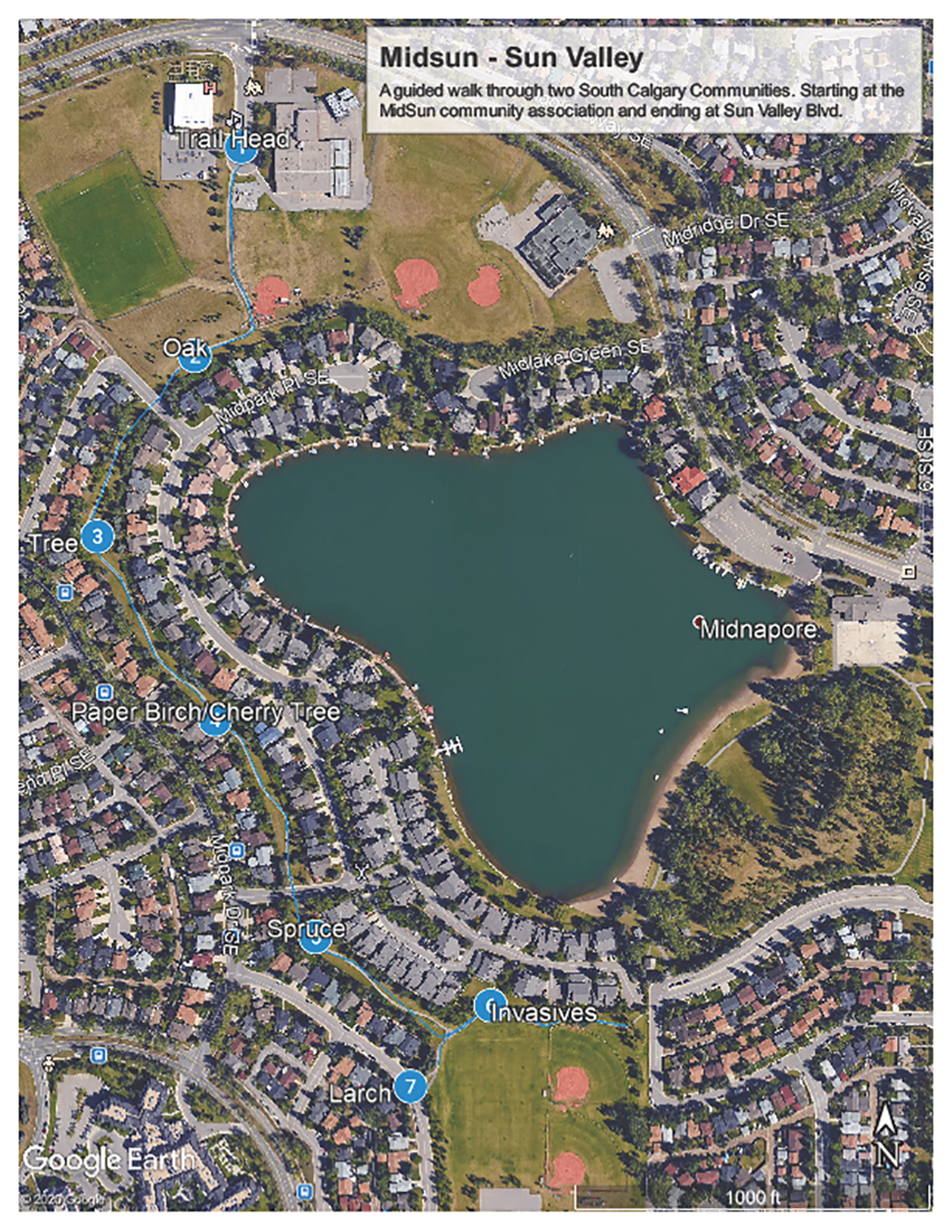
Google Maps tour currently unavailable
Stop 1
Begin at the trail head between the skate park and playground
Welcome to this little walkway between Midnapore and Sundance
- If you are following the map along on your phone as you walk along this pathway stop at the marked points and tap on it to reveal what you are seeing
- Please remember to stay on the trails and respect other park users. Also leave all of the natural materials you find behind. Items like sticks and feathers are important nest building materials.
Enjoy your walk!
Stop 2
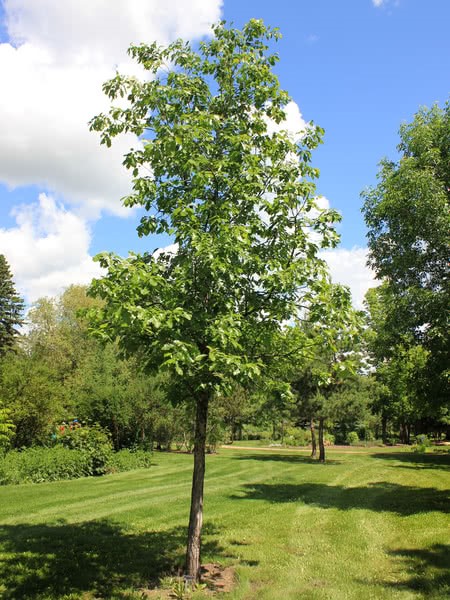
This is one of the first tree species that borders the pathway. Bur oak has a uniquely shaped leaf with deep lobes. These trees are hardy and adaptable to Calgary’s tough growing environment. As they mature, these trees are also valuable habitats for birds and squirrels that move through this area. While the cooler climate of Calgary somewhat limits how large this oak tree will grow, it can still reach over 20m in height when fully grown and will provide excellent shade cover, both for us and for other wildlife that make their homes in this area.
Stop 3: Wildlife tree
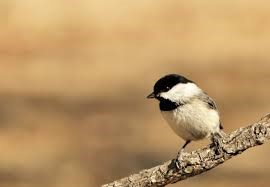
Walking Directions:
Continue along the pathway south and cross the street
Once you cross the road you will be walking down a broad green parkway with trees along both sides. Here we can find some large balsam poplars. One of these trees has several small insect cavities in it.
In addition to the insects that are making their homes here, many bird species can use these trees for habitat or hunting for insects along the tree. One of the smallest birds to find around here is the black winged chickadee. With its black head and white cheeks, these birds are distinctive and considered cute by many. These birds are cavity nesters, spending the whole season here and using old woodpecker holes or digging their own cavity in rotting wood. They feed on insects, nuts and seeds, and will hide seeds and nuts for later use. Black-capped chickadees have been known to use thousands of hiding locations, remembering each place they have hidden food.
Stop 4: Paper birch and cherry tree
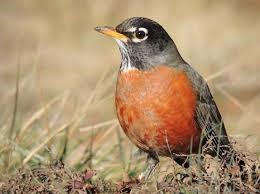
One of the tallest trees in this park is a large paper birch. Its distinctive, flaky white bark gives the tree its name. Used by generations of First Nations peoples for canoes, baskets and cradles, the bark is highly valued. This area also has a few fruit bearing trees like cherries. These are valuable resources for birds and squirrels who make this pathway their home. In addition to trees in the park, many of the neighboring backyards have trees and shrubs that will provide food and shelter for birds that cross through this area.
Robins are perhaps one of the best-known songbirds in Calgary. An early arriver in spring, robins are often found pulling worms out of the grass, and laying their iconic blue eggs. Robins can lay as many as three broods of eggs over a summer, before flying south for the winter.
Stop 5: Spruce
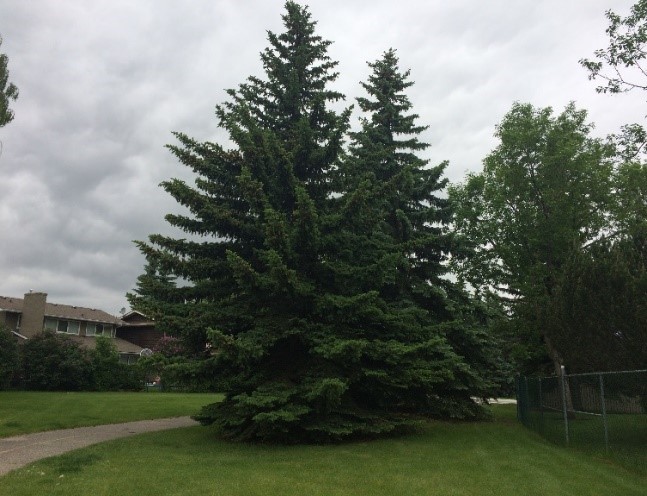
Walking Directions:
Cross the road to the south and continue along the pathway to the next stop.
All along this pathway you will see large Blue Spruce. Also known as Colorado blue spruce these trees are low maintenance and tolerant of our dry climate. Its namesake blue needles are stiff and sharp, but if you listen and look carefully you will find the presence of birds here as well.
One frequent visitor to this park and across Calgary is the magpie. Beautiful and intelligent, they are willing to eat just about anything, making them important in the ecological systems they inhabit. They also build unique roofed nests, as they nest early in the year and need to protect their eggs from Calgary’s unpredictable spring weather. While this parkway does not have many nesting trees, magpies will visit looking for food.
Stop 6: Invasive species
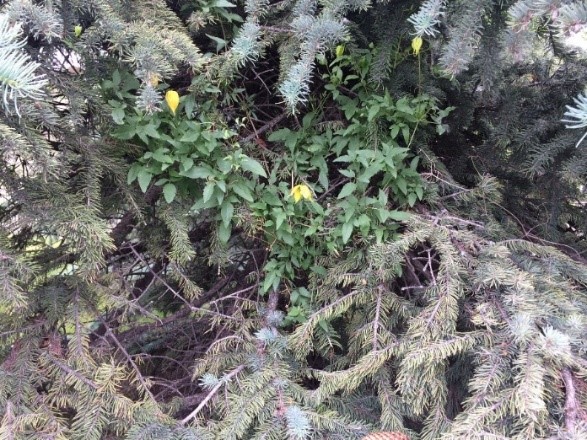
Walking Directions:
The trail has a T intersection here. Head left first for stop 6
Look carefully at some of the trees here. Within one of the spruce you will find an unwelcome guest. This is yellow clematis, an invasive species that has made a home here in Calgary. If it is not removed it will eventually become so heavy it will weigh down the trees until branches break and ground level vegetation is smothered.
Stop 7: Larch
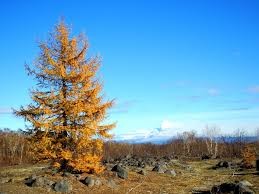
Walking directions:
Backtrack past the intersection and take the final leg of the pathway to stop 7
As we approach the south end of this pathway, we find an interesting tree species to observe. These are Siberian Larch, coniferous trees which, unlike other needle bearing trees in Calgary, will actually lose their needles each fall and grow new ones in the spring. Before they drop their needles they turn a brilliant golden colour, making them a favorite tree to observe. As you’ve walked this pathway you’ve had a chance to see just how vibrant this little inner city park can be. There is another bird species that makes its home here that can be very hard to see, a small falcon called a Merlin. These dark grey or brown birds are fierce hunters and swift flyers, propelling themselves through the air with rapid beats of their wings. They have a distinctive call when nesting, though will be very quiet at other times. Their primary prey is smaller birds in their habitat. They don’t build their own nest but will use nests left over from other birds, particularly crows and magpies.
Come back and visit Bowmont Natural Environment Park again. There is so much to explore here with its diverse habitats, abundance of wildlife, interesting geological landforms and spectacular views of the river valleyFrom here you can retrace your steps back to the Community association. Take some time to listen to and watch the birds flying from tree to tree, crossing the pathways as they check backyards for food.

